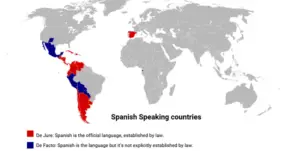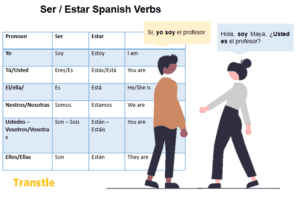Spanish Subject Pronouns: Guide, Chart, Examples & Practice
Spanish subject pronouns
Spanish subject pronouns are a type of pronoun that refer to subjects of the sentence, in English they are I, you, he, she, you, we, they and it, in Spanish they are yo (I), tú (you), él (he), ella (she), nosotros (we), ustedes (you all), ellos (they), and ellas (they).
For example, in the sentence “Maria is smart” the subject “Maria” can be replaced with “She“. Maria is smart- She is smart, in Spanish it would be “Maria es inteligente” – “Ella es inteligente.”
Other example is “The tree grows fast” – “It grows fast”, “The dog is fed” – “It’ fed”
These pronouns are necessary to build Spanish sentences, and they are typically placed at the beginning of a sentence. In some cases, subject pronouns can be omitted in Spanish, unlike in English, but they are used to emphasize or clarify the subject in certain situations.
Chart
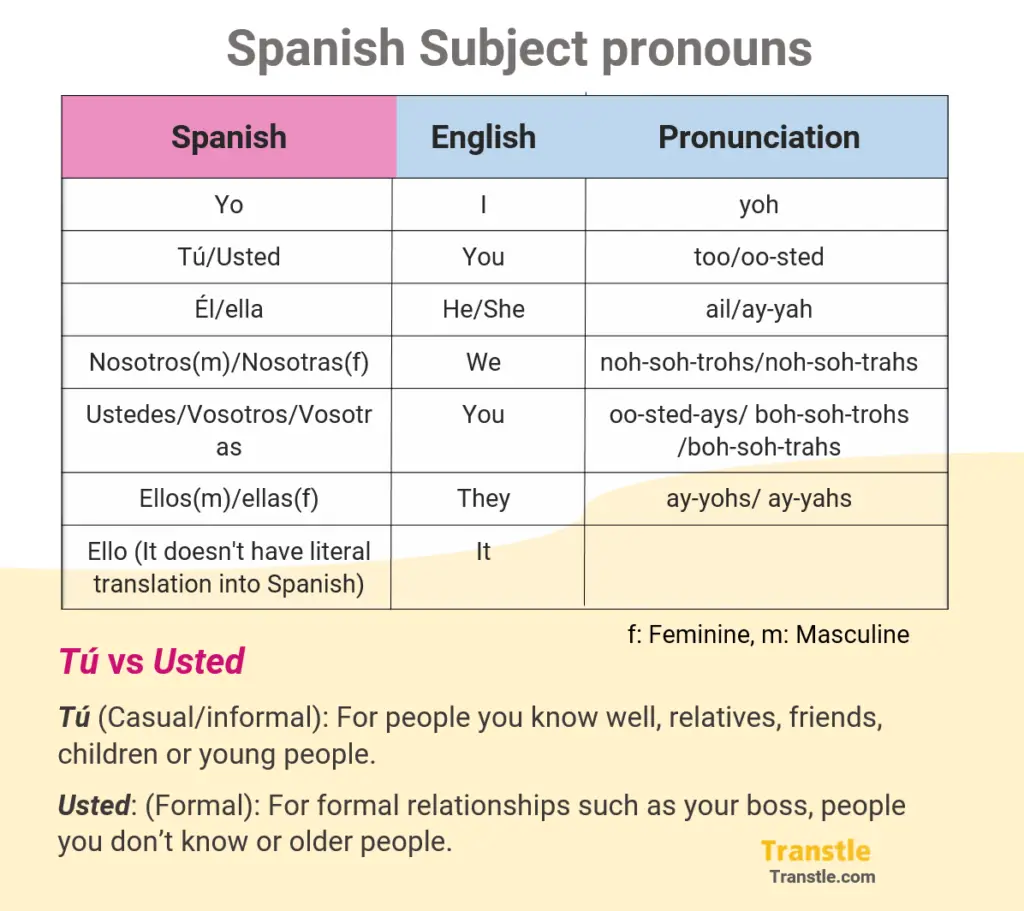
Examples and sentences
|
How and when to use the subject pronouns in Spanish
Subject pronouns are commonly used at the beginning of a Spanish sentence to refer to the subject. Sometimes, they can be omitted if the subject is clear from the context. They need to be used in the following cases:
- After some propositions to emphasize the subject
¿Y qué van a hacer ustedes?- What will you do?
Ella sí que es talentosa. – She is really talented.
- After the verb “Ser”.
Soy yo. – It’s me. |
- To point out
¿Quién quiere comer?, Él – Who wants to eat?, Him |
- For more clarity or contrast
Ellas estudiaron, pero ustedes no. – They studied but you didn’t. |
- To compare
Él hace más ejercicio que tú. – He workouts more than you do. |
- After some propositions
Según tú. – According to you. |
Omission of the subject
In Spanish, subject pronouns can be left out because the verb conjugation shows who the subject is, whereas in English, they are always necessary.
For example, “Ella come ensalada” means “She eats salad”, and the subject pronoun “ella” is clearly being used. However, in Spanish, you can also say “Come ensalada” whose literal translation is “Eats salad”, since the verb conjugation “come” indicates that the subject is third person singular, either “él” (he) or “ella” (she).
Ella come ensalada. – She eats salad Come ensalada. – You can’t say eats salad, you need to say the pronoun, in this case, it’s “she”. |
Singular and plural forms
The plural forms of some subject pronouns, such as nosotros and ellos change based on the gender of the subjects, while others, like yo and tú, remain the same. Additionally, Spanish has different pronouns for formal and informal situations, such as tú (informal) and usted (formal).
The pronouns “yo”, “tú”, “él”, and “ella” are singular and remain the same regardless of the gender of the subject.
|
- The pronouns “nosotros” and “ellos” are plural and change according to the gender of the subjects. “Nosotros” is used when referring to males or both males and females, while “nosotras” is used only for females. “Ellos” is used when referring to males or both males and females, while “ellas” is used only for females.
We | When you talk about males only, or both males and females at the same time. (Neutral) | Nosotros |
If you refer to females only. | Nosotras | |
They | If you talk about males only, or both males and females at the same time. (Neutral) | Ellos |
If you talk about females only. | Ellas |
Examples
m: Male; f: Female; m/f: Both genders |
- Ustedes, Vosotras/Vosotras. When talking to more than one person, “ustedes” is used in Latin America to refer to both males and females. In Spain, “vosotros” is used when addressing males or both males and females, while “vosotras” is used only for females.
Ustedes (Latin America) | When you talk to several persons, no matter their gender. |
Vosotros, Vosotras (Spain) |
|
Examples
Vosotros estabais en Madrid (m – m/f) – You were in Madrid. Vosotras estabais en Madrid (f) – You were in Madrid. |
Tú and Usted
In Spanish, there are different ways to say “you” in singular: “tú” (informal), “usted” (formal), and “vos” (in some countries). The choice of which one to use depends on the kind of relationship you have with the person you’re talking to, the age differences between the speakers and the regional variations in Latin American Spanish or Spanish from Spain.
- Tú. It’s used for casual interactions or relationships, such as with friends, relatives, or young people.
- Usted. It’s more formal and used for relationships like with a boss, someone you don’t know, or someone much older.
- Vos. Vos” is used in Argentina, Uruguay, Paraguay, and a few regions of Colombia and Venezuela.
Learn more: Tú vs Usted
Summary
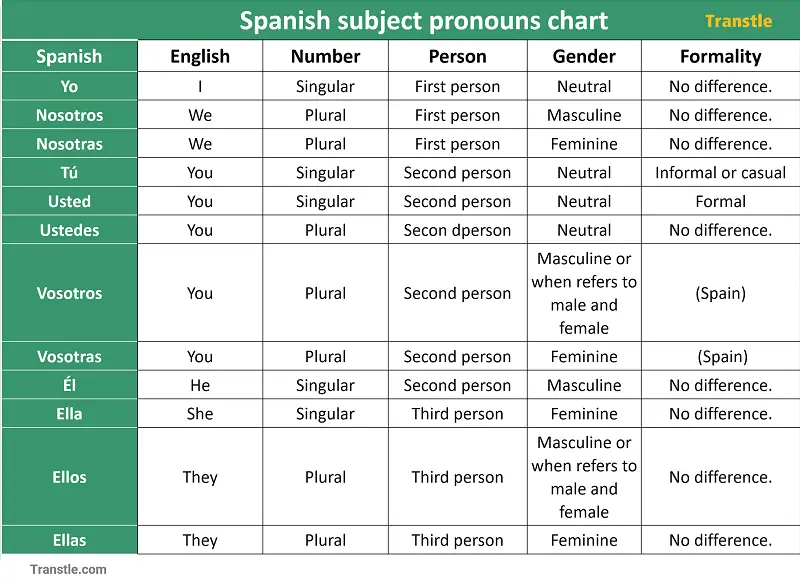
Exercises

Time's up
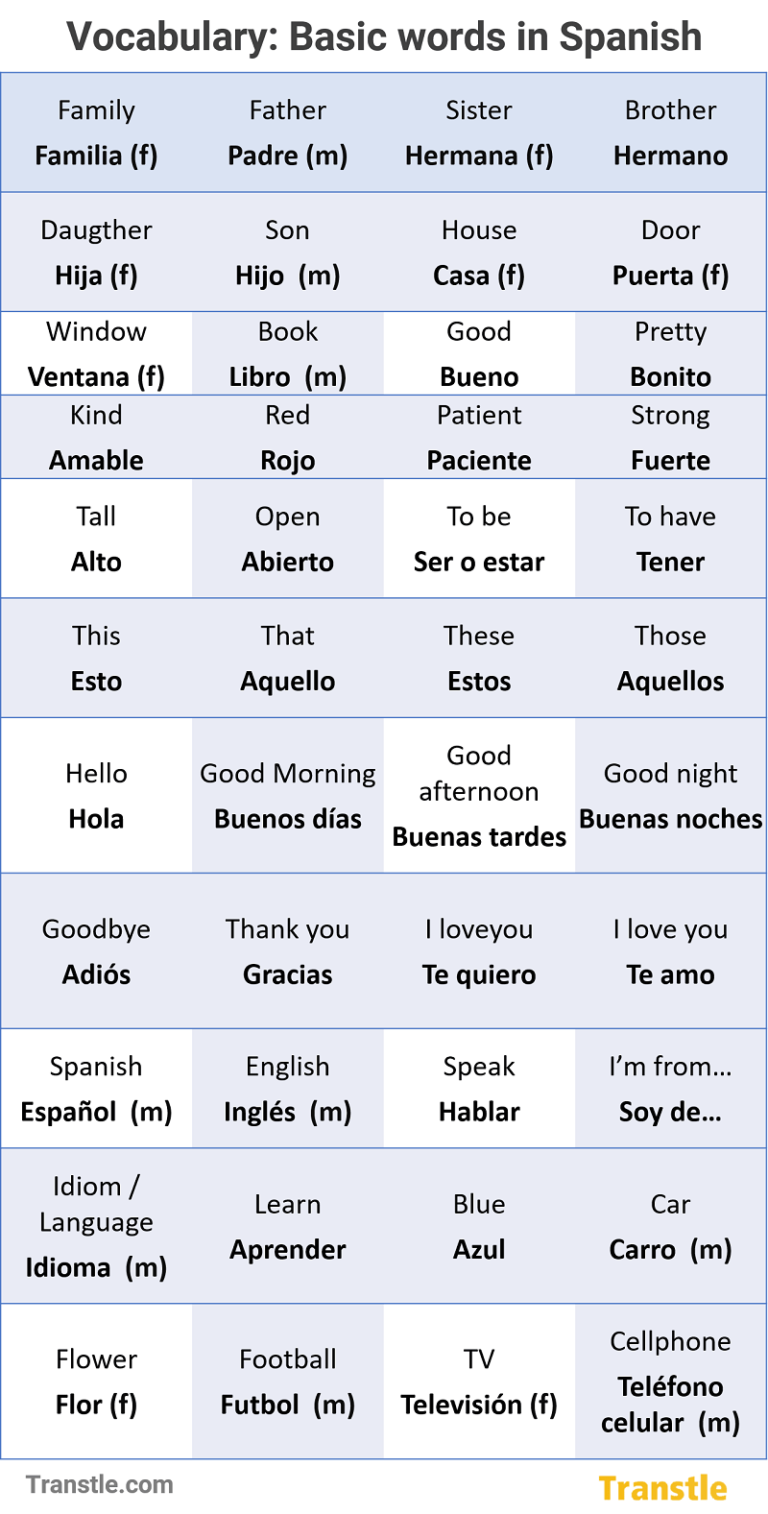
Read next


